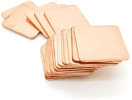HonestReview
Well-Known Member
- Joined
- Feb 9, 2019
- Messages
- 3,557
- Reaction score
- 790
- Country
- Sweden
It would most likely be OK for the cam to cut the EMI shield out at the SOC processor to allow for direct heat-sink attachment. The heat-sink itself will block direct radiation if you ground it to wherever the EMI shield grounds (preferrably with braid but wire is probably enough). But there is a chance that the EMI could find the new opening and escape between the shield and the heat-sink, and while that won't get back to the cam, that path could radiate away and cause interference with devices around the cam (car sensors, GPS, etc,). Personally I'd do that as I have junk I could close that hole back with if I had to. Or I could duplicate the EMI shield. You folks may not have the junk drawer and tools I do.
Anyone trying this needs to be sure the EMI shield does not contact any components under it, and be careful about that when you top the stack off with the heat sink. Also ground the heat sink so it can act as a EMI shield.
Phil
I have a question and this appears to affect @EGS , too. Definitely need some guidance here:
https://dashcamtalk.com/forum/threa...invitation-limited-quantity.42404/post-517840
I am sure my 20x20x8mm shims will contact diodes, capacitors, and other components on the pcb in addition to the SOC. As does the shield @EGS created, if you look at my link. His shield sits on top of the SOC but most likely contacts other components on the pcb board, too.
Will I need to cut my shim down to the size of the SOC? I am not sure I properly understand your comment, but if I am reading things right, we don't want the copper plates to touch anything EXCEPT the SOC? Meaning I need to trim it down to exact 20x15mm (or there abouts) so it sits on top and ONLY ON TOP of the SOC for fear of shorting out other components?
So is it not safe to use epoxy to glue the copper shim to the EMI Shield unless i cut the copper plate to exact size of the SOC?
Bit confused now.
Or am I incorrect in reading what you wrote





